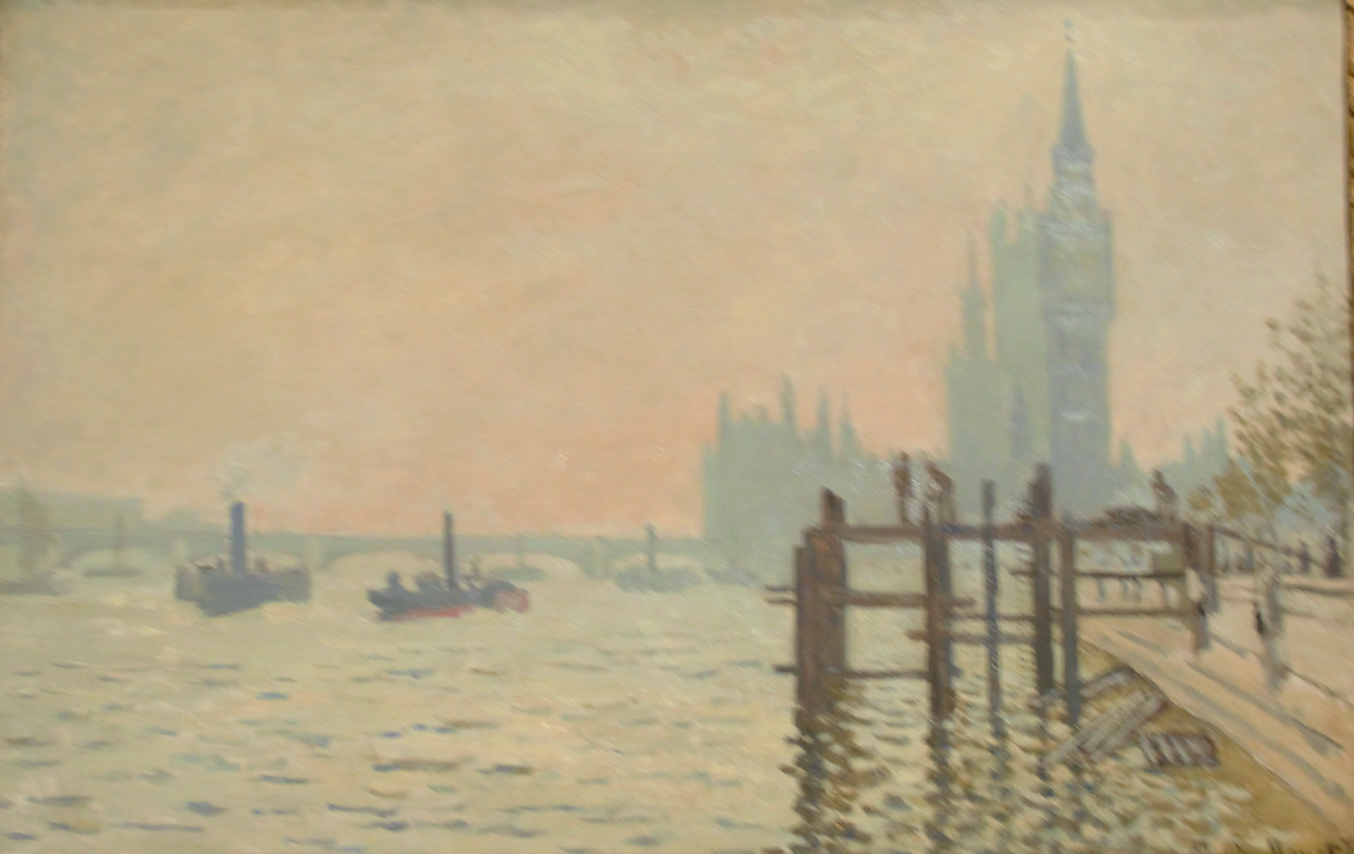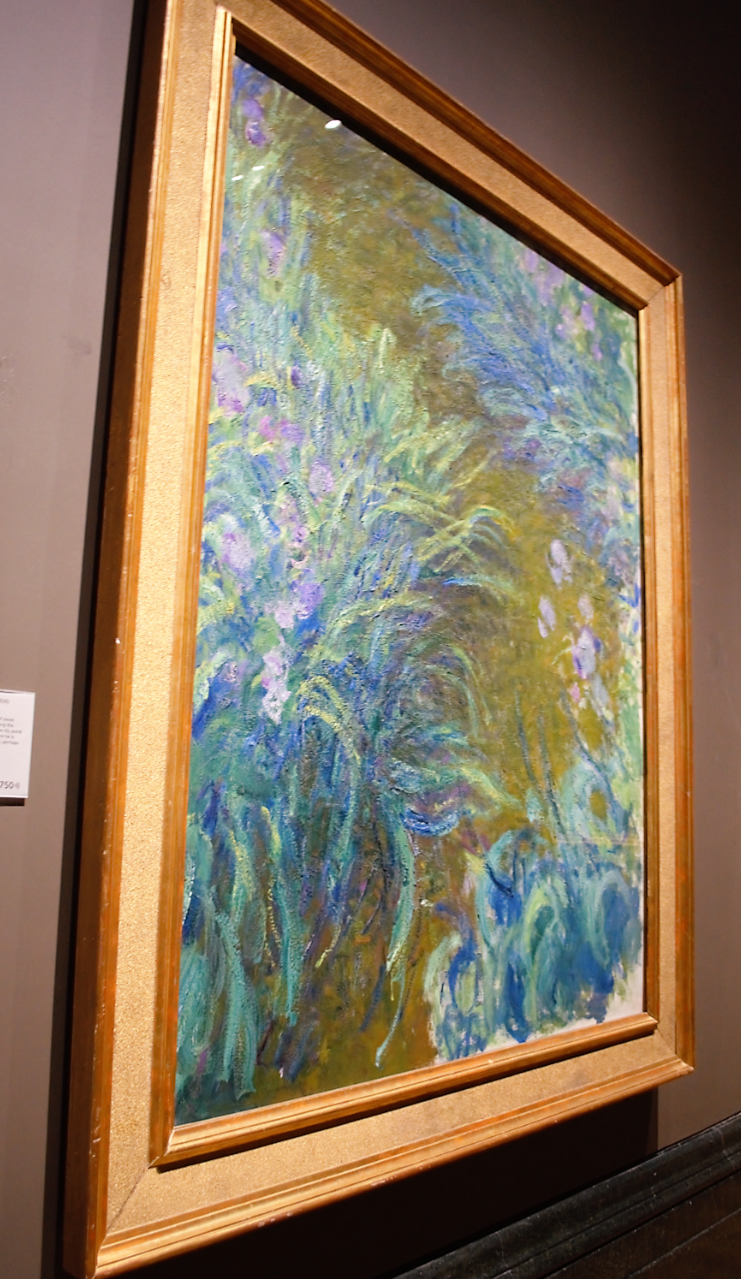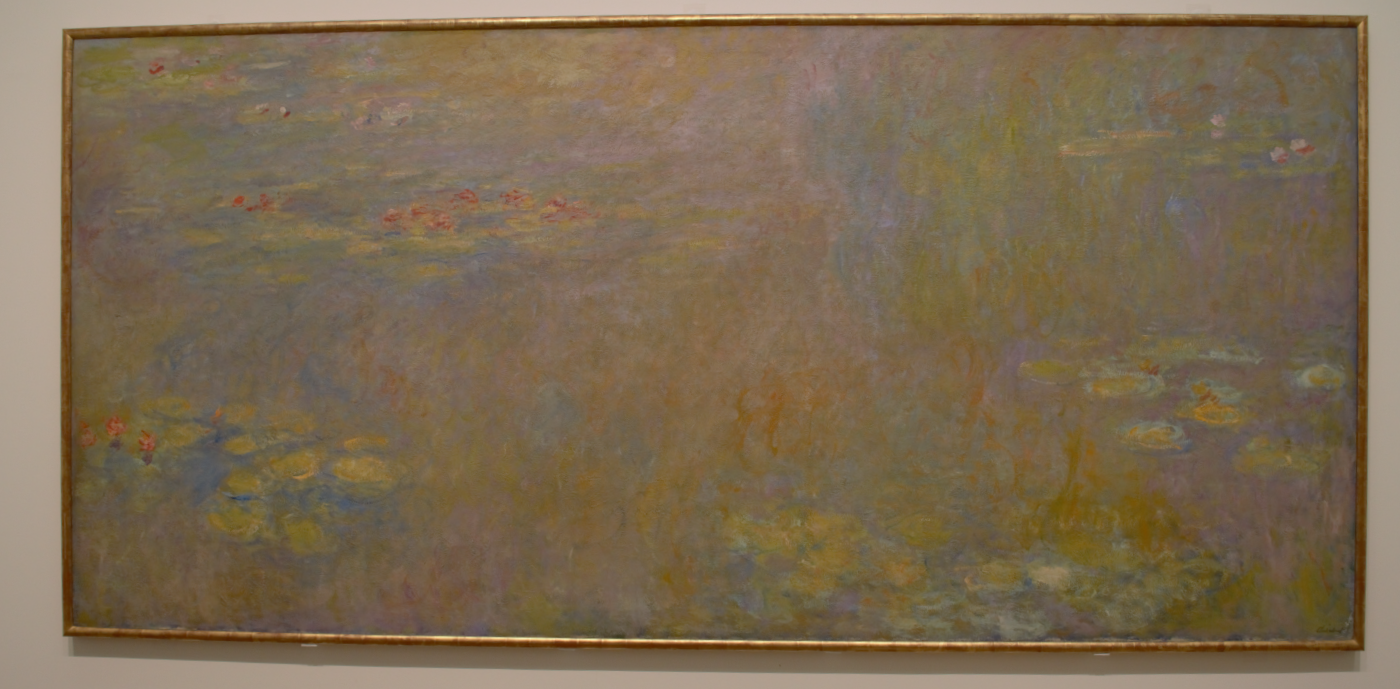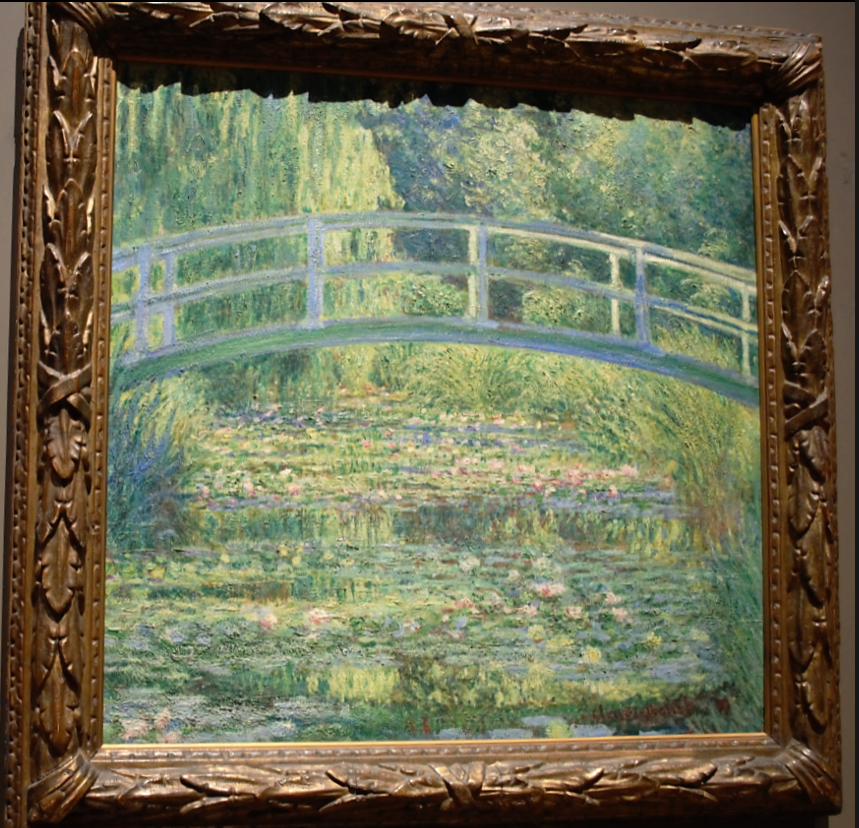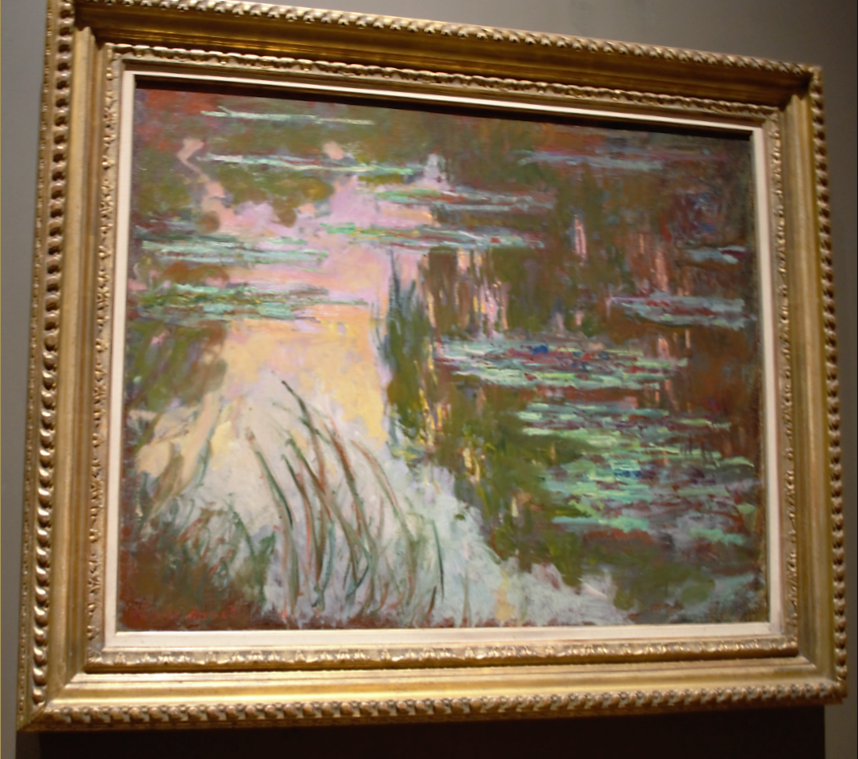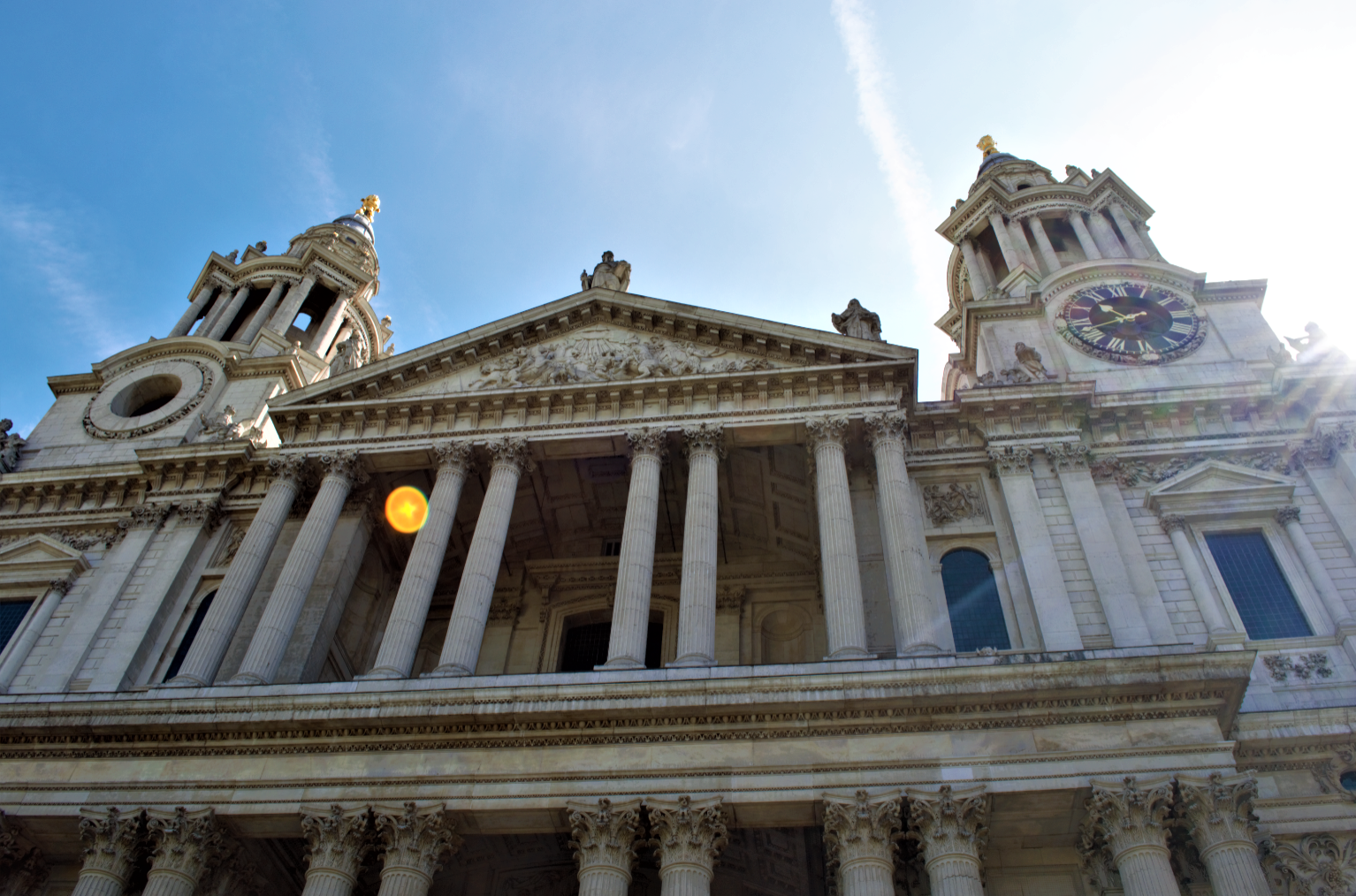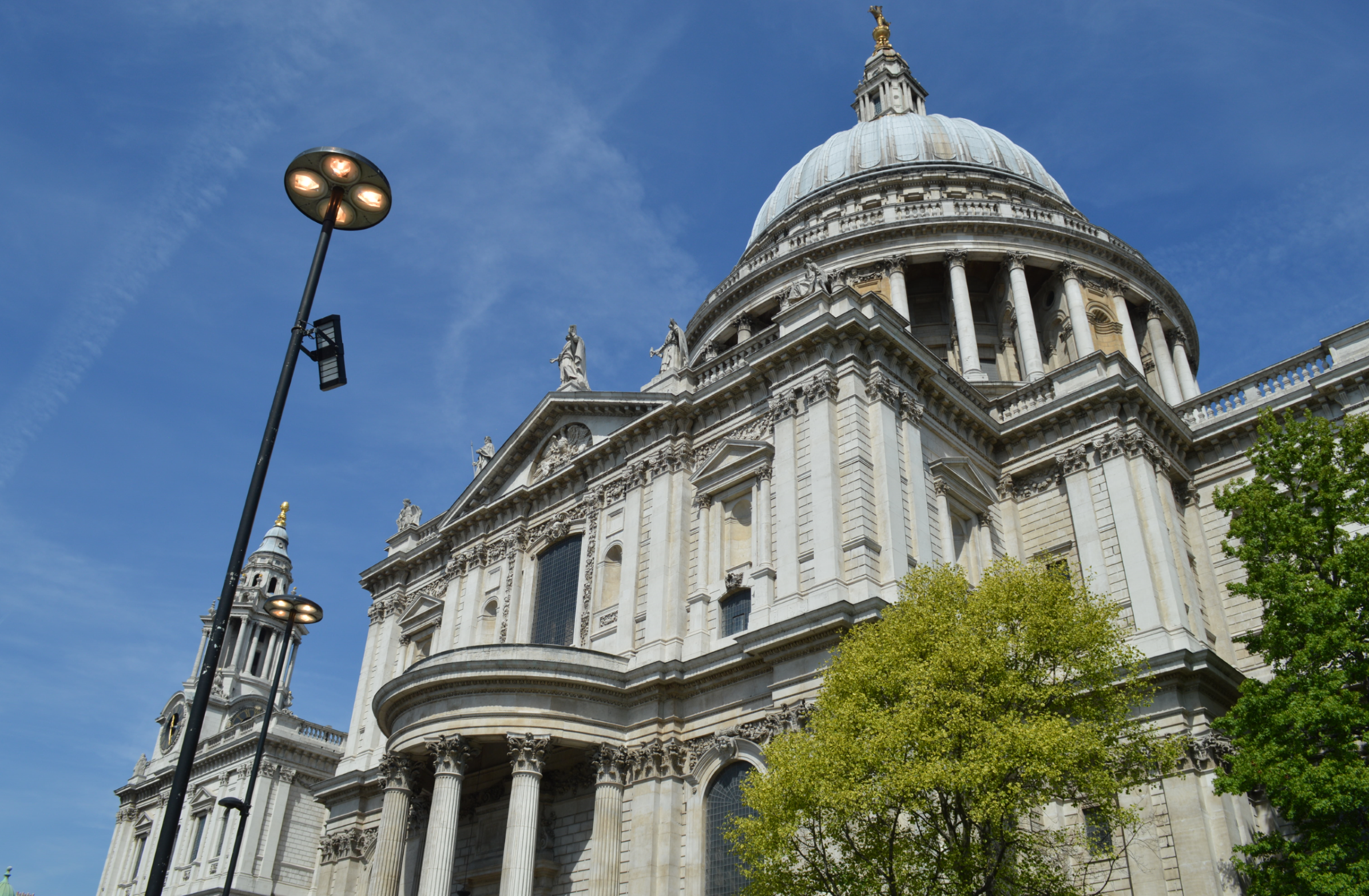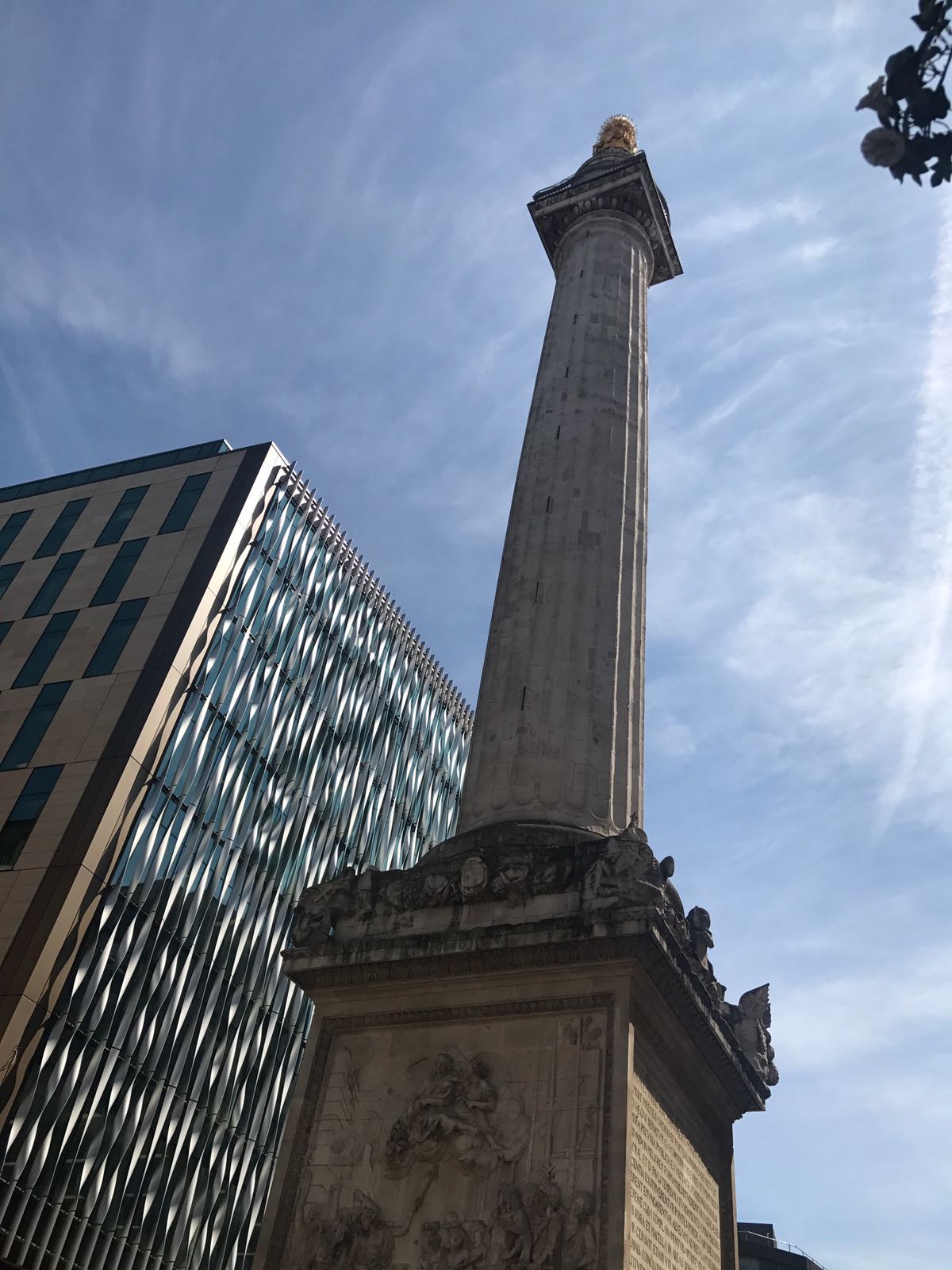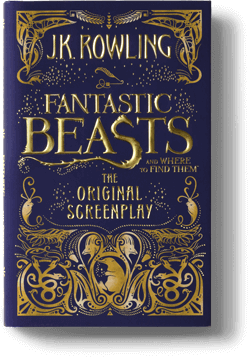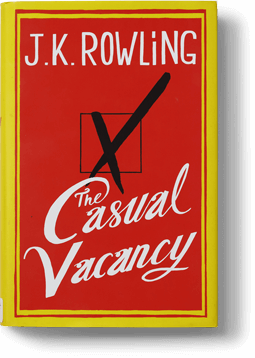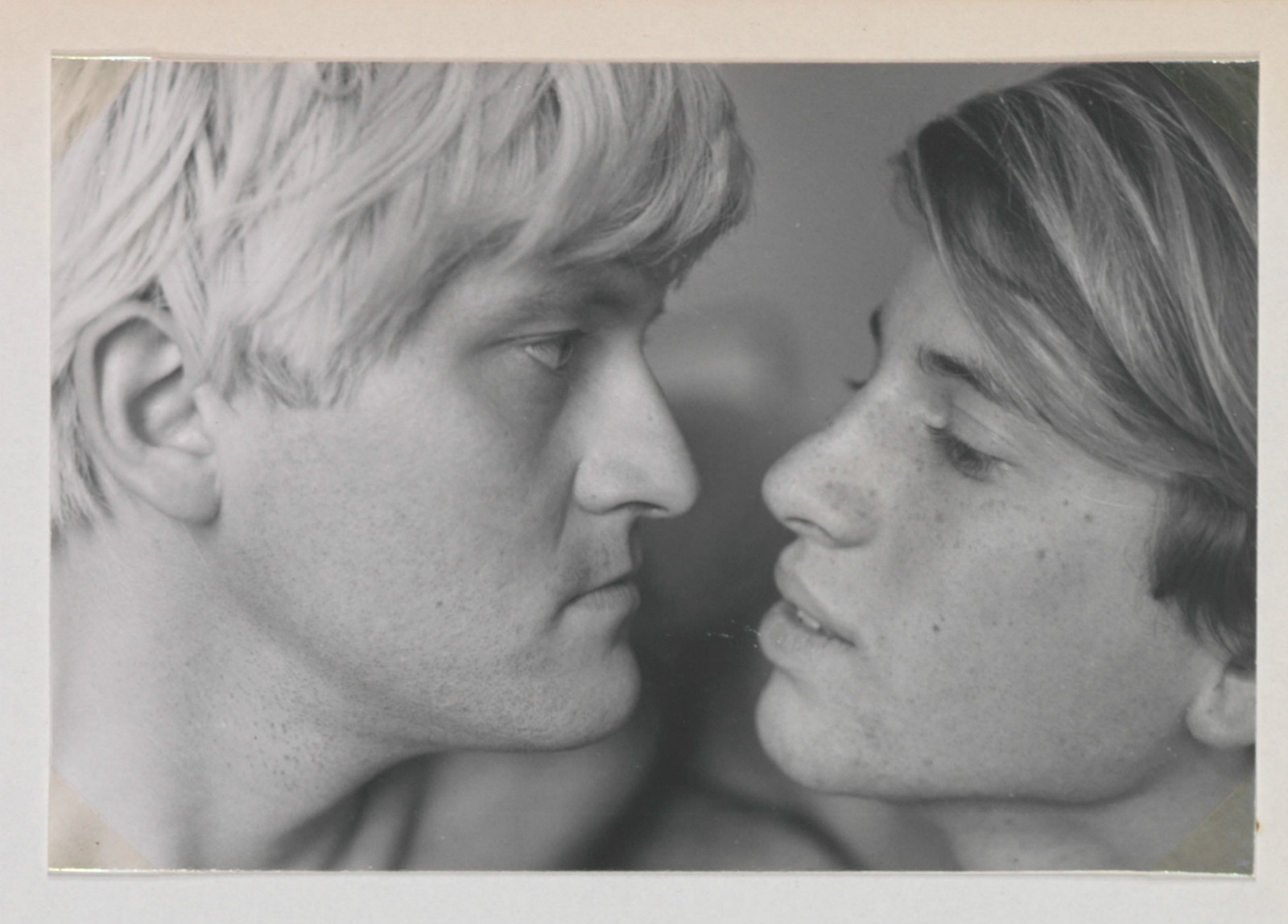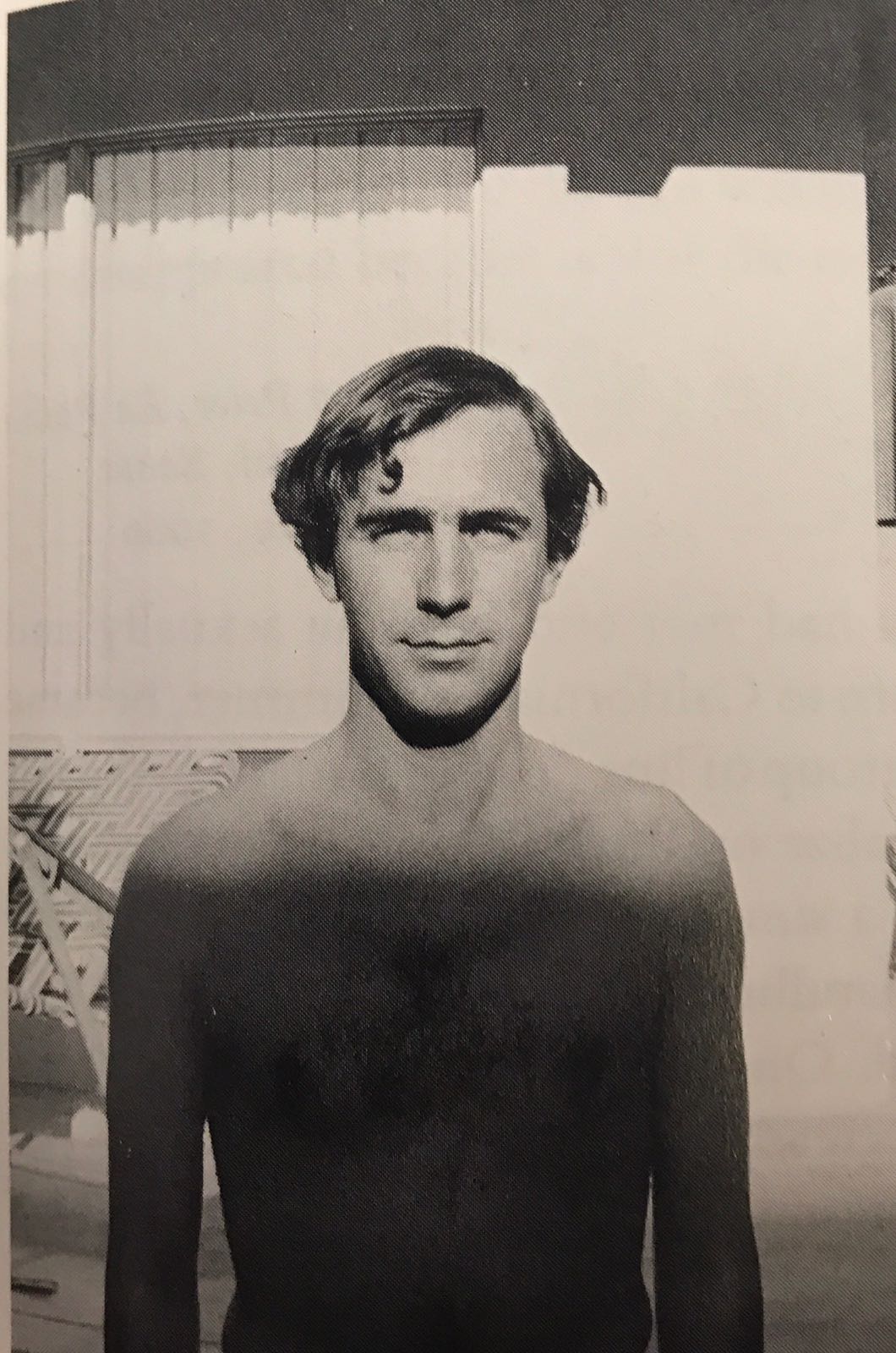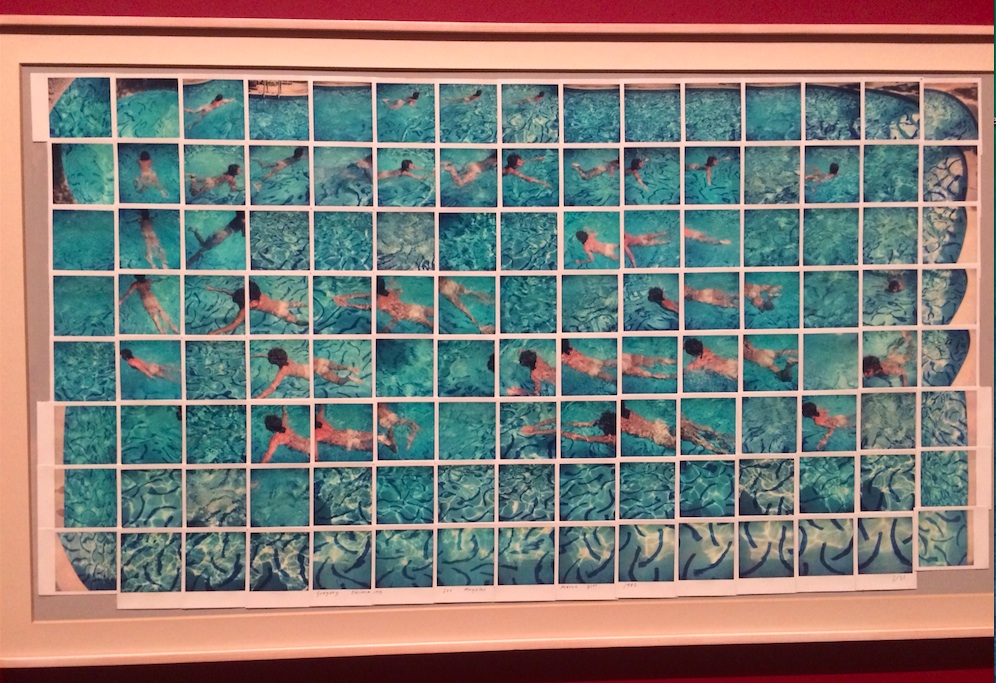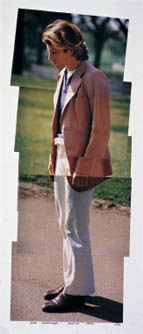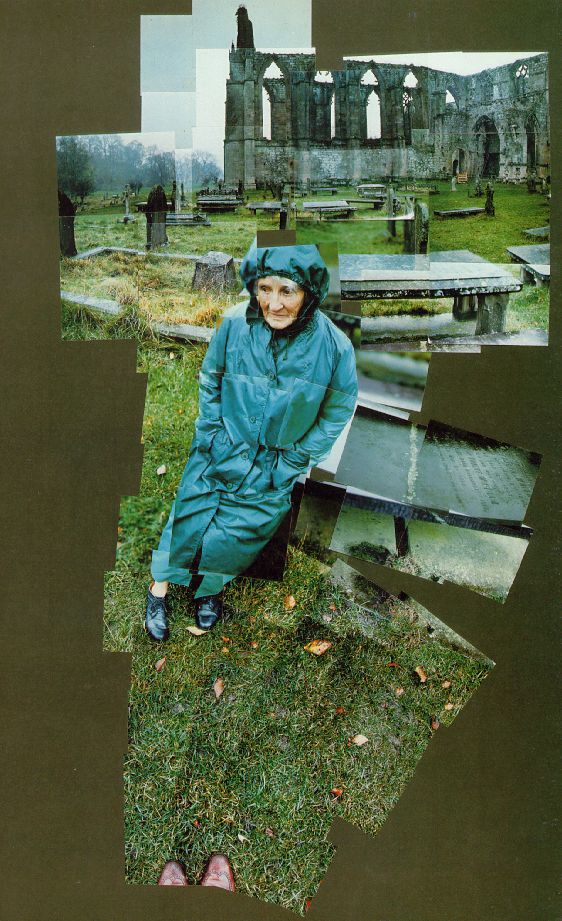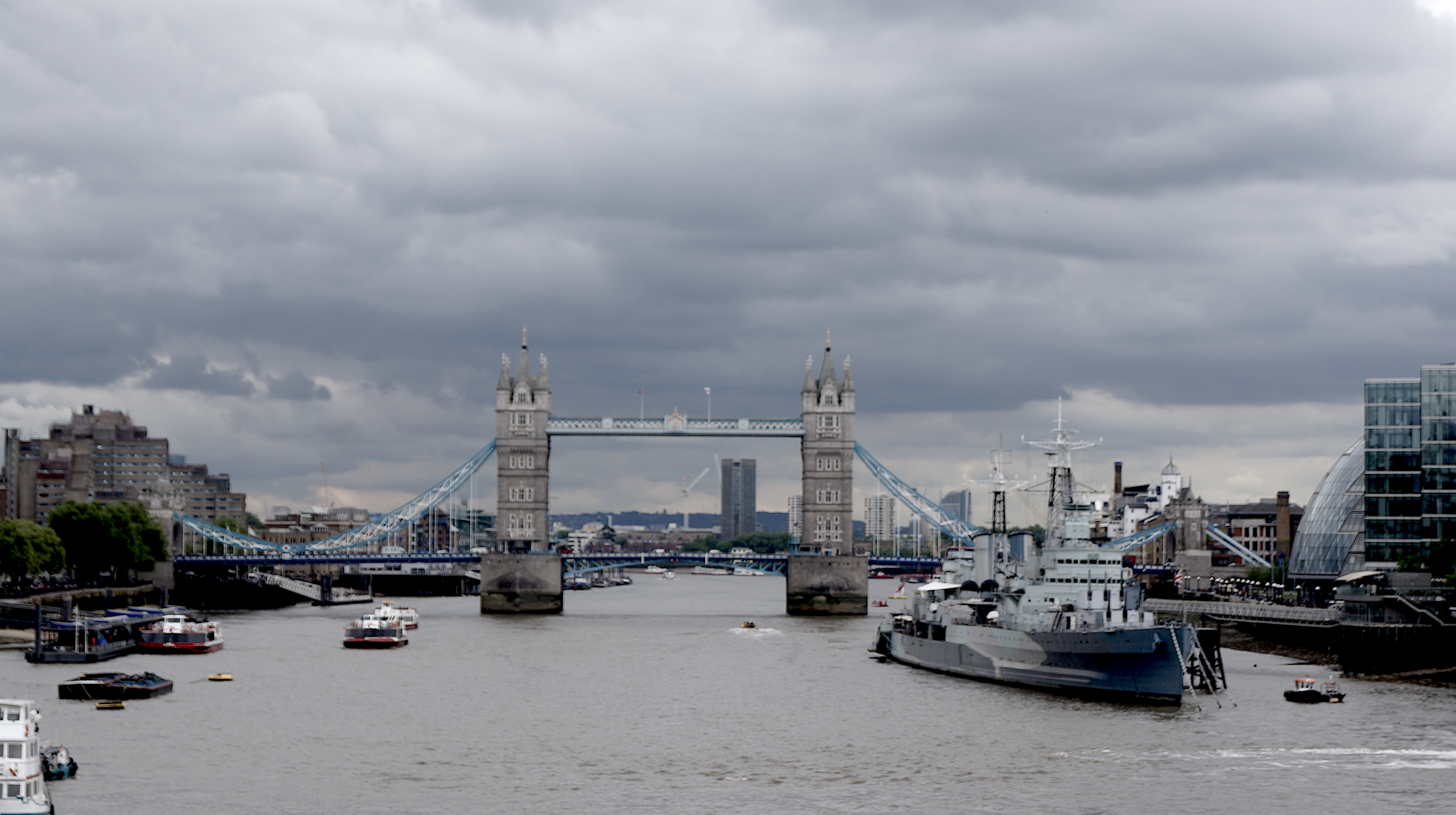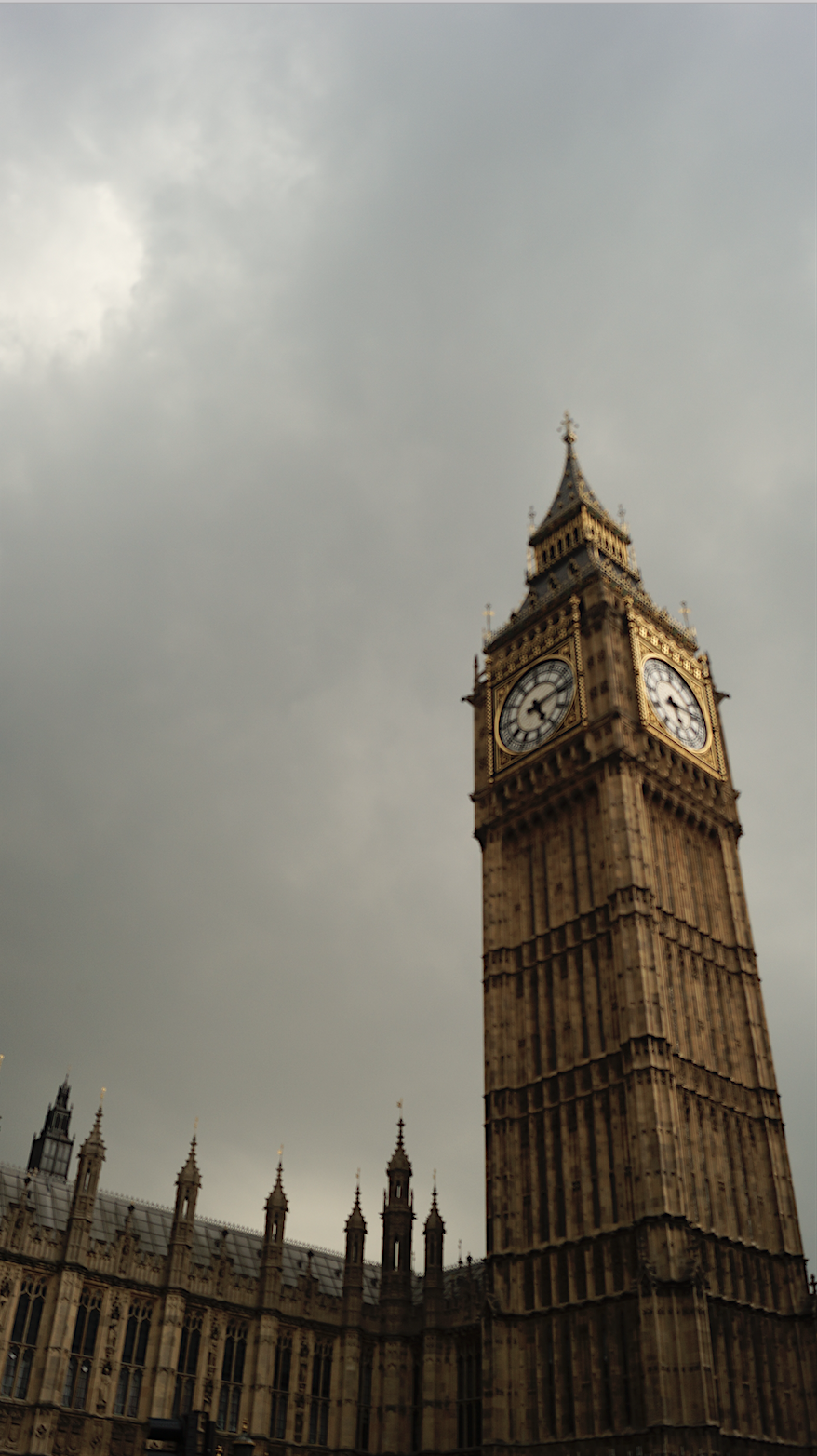Adding Pigment
From Londonhua WIKI
Contents
Adding Pigment
by Kristy Giacoman & Sofia Reyes
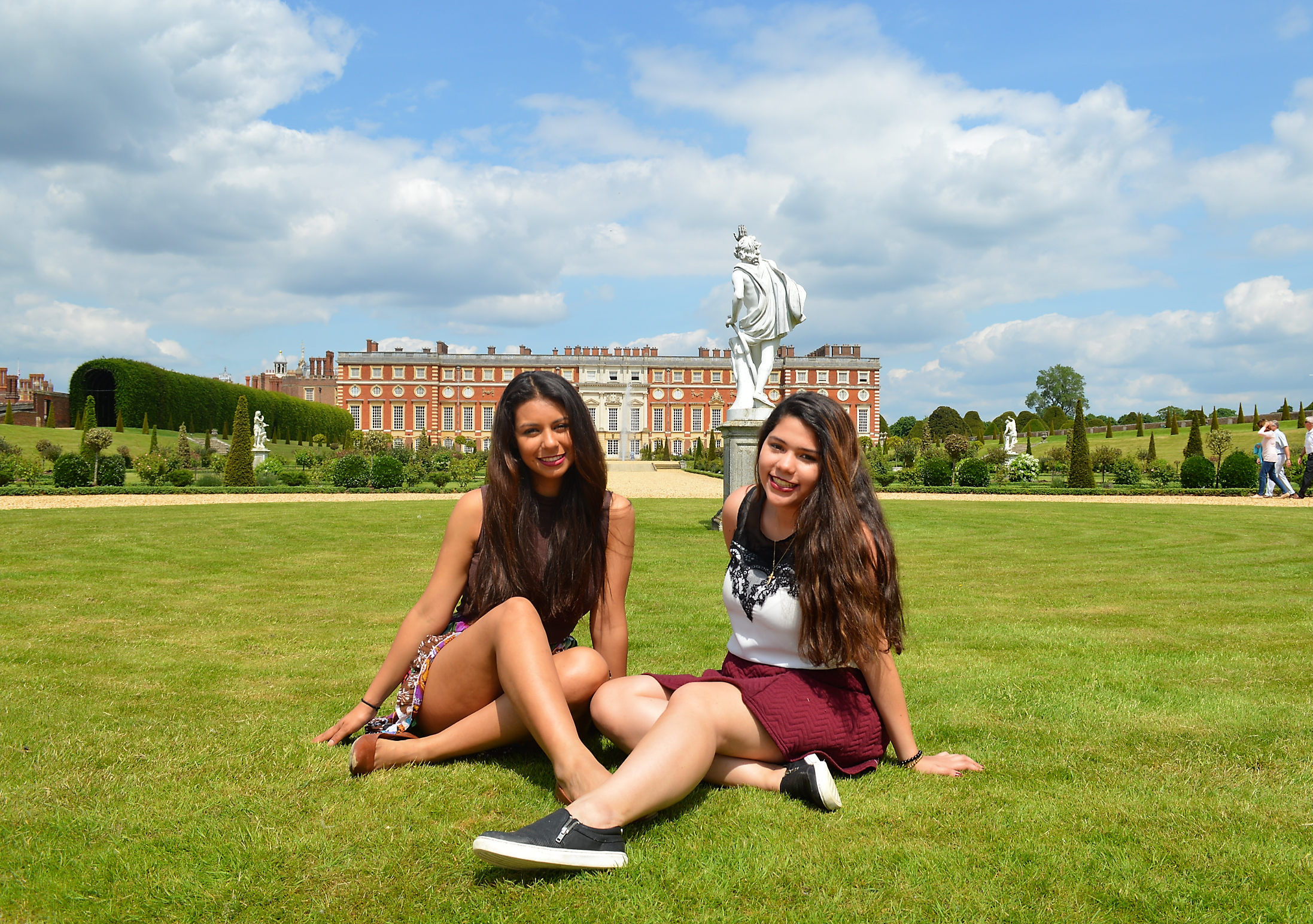 Us |
Abstract
"A London Full of Colour" is a project that aims to portray a different reality of the daily life of London citizens. By picturing different scenarios in their reality comparing them to the reality that I choose for each one of them, the audience will be able to admire the beauty and uniqueness of the city from a different perspective. I have gone to international poetry competitions and taken painting and photography courses before arriving to college. This project will combine my favorite forms of expression through art and hopefully brighten the days of the viewers. The main message I wish to convey is that every single one of us chooses the reality they want to live in, meaning that the same place could be seen as a prison for our souls or a wonderland for our imagination. The goal of this Milestone, however, is to paint five acrylic surrealistic paintings of the most emblematic sites in London exaggerating the use of bright colors instead of the usual gray palette that is seen due to the weather.
Introduction
The title of this Milestone was chosen to be "Adding Pigment" as for every person that goes through London is not only influenced by it and its weather as seen in Colourless London, but at the same time, they leave a piece of them that adds to the beauty of this city. In the same way as they take inspiration from the amazing stories London has to tell, the create a new chapter, and if they do it well, a really good one. Each artist presented in the background of this Milestone was chosen because of their irrefutable relevance to the history of London in the artistic side. In the background we present the way in which different situations they lived through their lives conducted them to become some of the most influential and inspiring individuals the streets of London have seen. Likewise, each artist is known to have revolutionized in some way their field "adding pigment" to the existing base of knowledge and techniques. From the field of Painting, Literature and Architecture, we chose a set of six artists decided in "Artists from the Past" and "Artists from the Present" to, in some way, categorize them by periods and let the readers draw conclusions about the similar traits in their work. Inspired by these great minds, we leave in the deliverable our own works of art painting the same sites where pictures were taken for Colourless London, choosing a specific picture for each one and "replicating it" in some way with acrylic paintings, just the way David Hockey used to do with his photography. The difference, however, is that we aim to emphasize the contrast between the gray color palette seen in the pictures that characterizes London and the use of color in our paintings that represents our perspective of the city. In this way we seek to add pigment to the scenery in a literal and metaphorical way.
Section 1: Background
Artistic Component
"Despite the widespread social anxiety caused by the fog, many artists found in it a source of inspiration from a wide broad of perspectives. For some, fog represented a looming presence, alive and malignant."[1] This quote from "The London Fog" by Corton perfectly exemplifies the way in which some people used too feel about the fog, however, for some other many artists, the fog could be seen as magical or even romantic. the same thing could be seen from very different perspectives and used for many different purposes. The fog could be used by robbers to easily disappear after their theft and the same fog could also be used by artists like Monet to show the world the beauty of a city like London. Likewise the fog could be the source of sickness and depression or could also be the source of motivation and inspiration, giving a person's mind the push needed to boost their creativity. Just like that, the city of London has been the source of inspiration and spectator of some of the greatest minds the world has seen. From painters to writers to architects, London has evoked many shades of feelings that have driven locals and foreigners to accomplish great things.
Artists From the Past
Being a city immersed in its own history, London has seen a lot happening through its streets, and digging in the past, it is easy to find a more gloomy, mysterious and heavy perspective of the fog, enraptured in all kinds of art. The following representatives were chosen because of their imminent and irrefutable success in their disciplines.
Monet
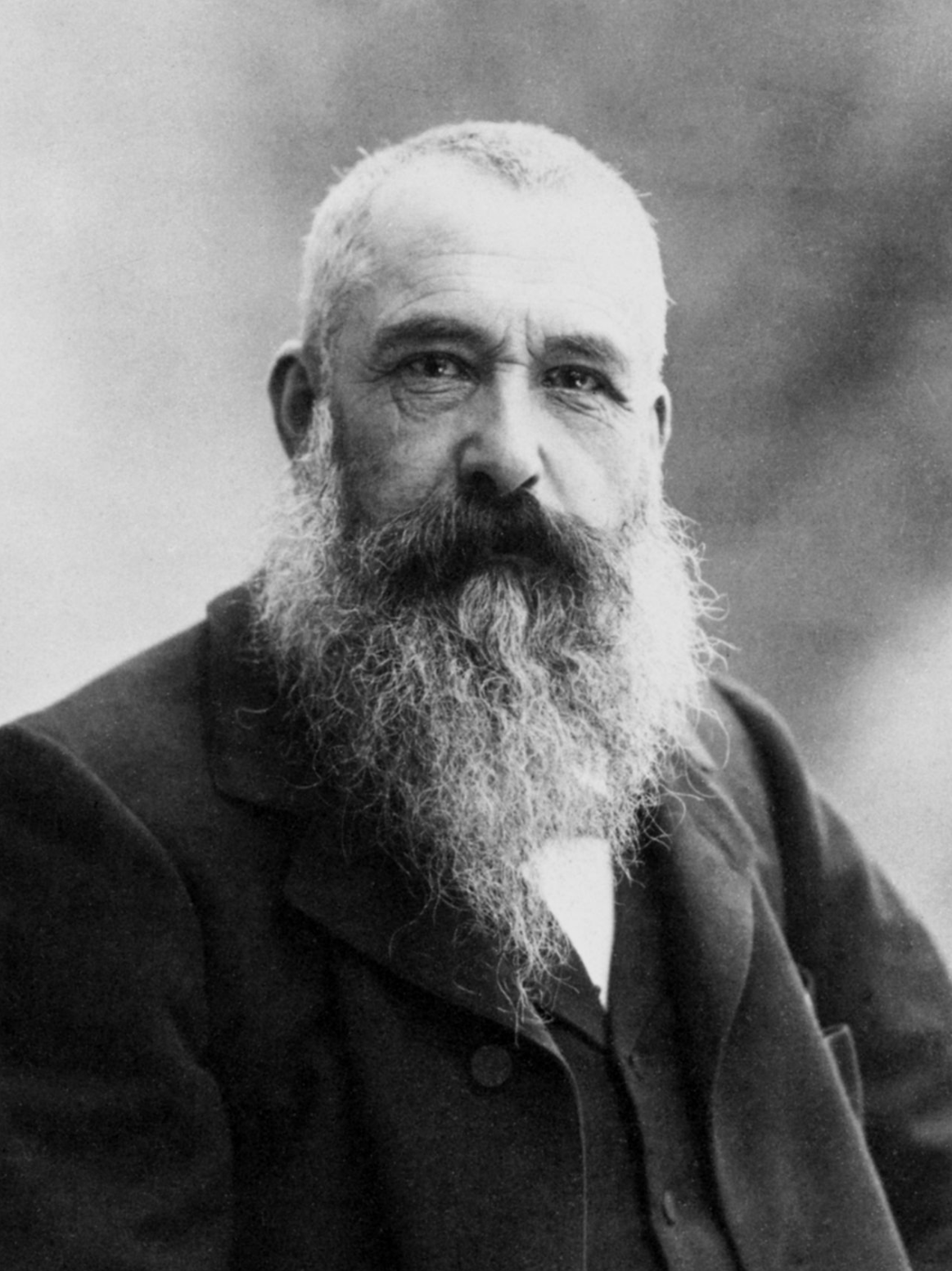 by Nadar | |
| date | 1 January 1899 |
|---|---|
Claude Monet was a French artist of the Impressionist movement. He was actually so influential to it that this movement was named after one of his paintings called Impression, Sunrise. The painting was named like that because "you can only see an impression of the sunrise and the person in it because he changed a lot his subjects and how he depicted them". [2]The the viewer has to analyze, assume and connect the dots to figure out the purpose of the painting. This is not exactly abstract art but it is definitely different from any sort of traditional art at that time. Monet was a revolutionary and the complexity of his works continue to amaze the most demanding art critics and attract collectors. Unlike many other famous artists, when Monet started, he had no prior knowledge of art techniques, which may have been the cause of him developing his own. However, he was surely inspired by any other artists before him. Today Monet is one of the best-known artists in the world. In the creation of his own style, his purpose was to overcome tradition and use intense brushstrokes to create an impression of a painting. He started painting in Paris many scenes of the Seine river. He painted impressions of landscapes of the place he lived in at different times of the day. This specific trait defines his work, because this technique was not only very useful for practice, but also allowed the viewer to perceive the scene from different perspectives of the same place and by the same artist. We can clearly see this technique in one of his biggest collections of paintings; Water Lilies, that he painted when he was living in Givenchy. Monet moved a lot during his life mainly within France, however, during the Franco-Prussian War, he moved to London for two years. [3]
During his time in London, he couldn't help but immerse himself in the captivating inspiration that emerged from the city's mesmerizing views. Using his technique, he painted many of its landscapes and buildings at different times of the day, as he was known for. He painted many views from the Thames including Parliament and Westminster and even though it was only for a short period of time, his time in London marked his artistic career. "His short stay in London resulted in the largest series of paintings that he had yet produced." [4] Monet, as many other artists, admired the London fog an the presence of it in his paintings was not only evident, but often even highlighted. The fog gave his paintings some sort of uniqueness and contributed to his Impressionism. As Christine Corton said in her book London Fog Monet commented " Without the fog, London wouldn't be a beautiful city... It's the fog that gives it it's magnificent breadth".[5] This was a very outlandish way of viewing one of the nation's greatest struggle, but once again, he was a revolutionary. He was most likely intrigued by the fog as it went alongside this style and it was in such an abundance he had never seen before. There was probably not another city in the world that united the large amounts of fog and the impotent man-made landscapes that were also full of meaning and history. In his paintings, he portrays the fog as part of the landscape or the impression of the landscape, which gave him great popularity due to his creativity and the originality of his works. In that time, there was certainly no other painter like Monet.
Yet he did not painted with huge detail, he created his works in such a way in which any Londoner would recognize the setting of his paintings. In addition to this, as he painted the same scene in different times of the day, he changed the colors to illustrate the different light patterns. The "special touch" or as we call it in this milestone "pigment" Monet added to his field was his originality and how even though he painted the same thing many times, each painting was unique. "Distance and perspective are abolished; a limitless expanse of water occupies our entire field of vision." [6] His paintings enraptured the idea of constant change and the beauty of it. He worried a lot about the ever-changing environment and the effects of light in his paintings. [7]Even though it was the same landscape, this technique allowed the viewer imagine that it was a completely different environment. He focused a lot on the effects of light of the painting and used a distinct color palette for each painting. This different use of light and color provided him the irrefutable fame he keeps until today, when his biography is now studied at schools and his techniques are implemented buy artists all around the world.
Water Lilies at Tate Modern
Charles Dickens
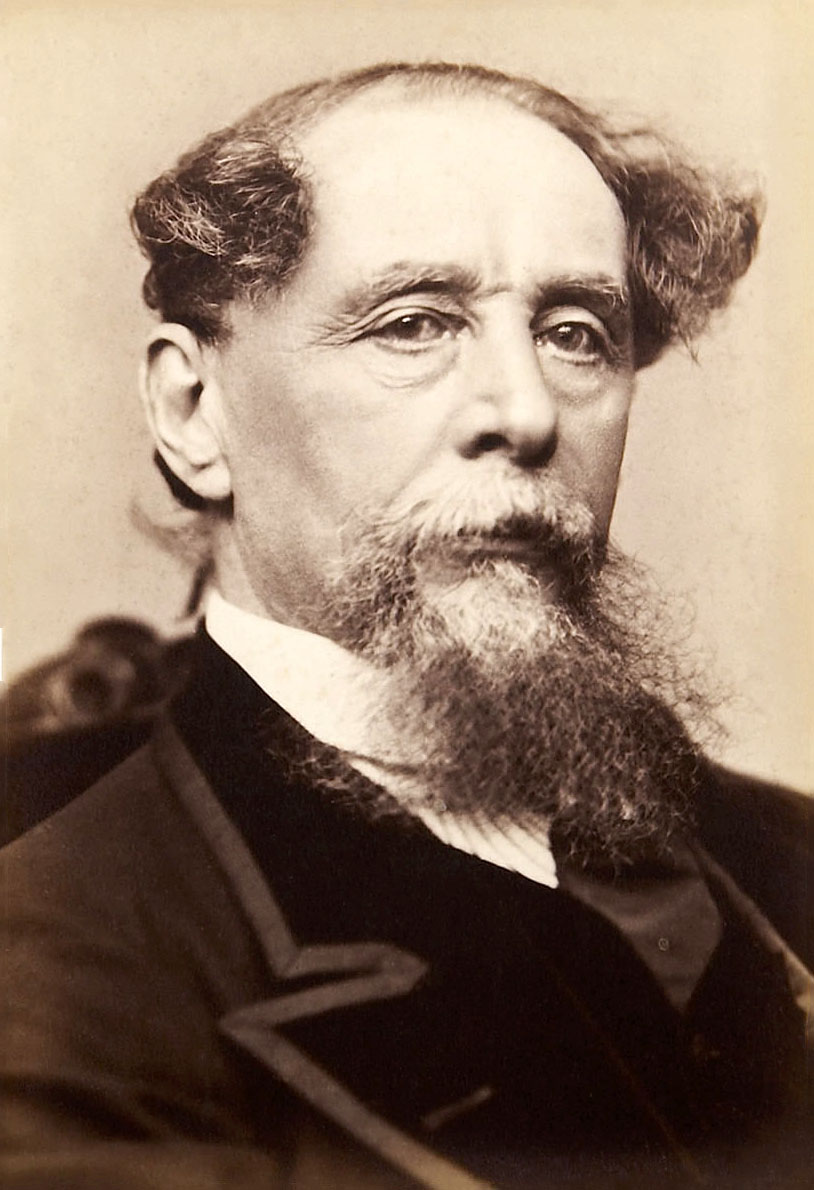 |
Charles Dickens was part of a huge family, being born the second of eight children on 1812, in Portsmouth, England. His parents named him Charles John Huffam Dickens and even though many people have heard about him and some even know his work, not everyone knows about his middle names because he decided never to use them and e simply known as Charles Dickens. However, even though he was raised with high aspirations of himself, it is almost impossible for him to have imagined the reach of his literary work in later years and how much his early life would influence him in the future. He was in London for the first time at the age of three because of his father's work and although most people are unaware at such an early age, it is believed that he "absorbed the sights, smells and sounds of the City"[8] As in any big family, money issues started to arise, however, that did not stop them from being happy in the early days. Nevertheless, it became a real problem for Charles when he was only twelve, as his father was imprisoned for debt. To help with the family needs, Charles was forced to leave school and work. We can easily infer that he did not make much money as a twelve year old, and that having his childhood taken away from him because of his parents mistakes left him very unhappy. For it was not his fault at all that his father as imprisoned, but yet he had to pay for his mistakes. This caused him great suffering but still he sacrificed himself to help his family. "He felt abandoned and betrayed by the adults who were supposed to take care of him."[9]
Even though he had no clue back then, that same situation gave him the freedom to explore the streets and corners of London and get to know every secret the city had to keep, paying close attention to his surroundings, he was able to get to know it "like the back of his hand". However, Dickens is credited with a passion for London and according to Michael and Mollie Hardwick in their book Dickens's England, "he entertained no such thing". For he grew up in the streets of London and this was not by choice, which allowed him to "greedily observe and absorb the city" getting to know it with "extensive and peculiar knowledge" as said by Michael and Mollie Hardwick, but not "loving it". [10] Despite this, it was not all bad for young Charles, because living as an adult while being a child also must have formed his character from a very early age and force him to mature and above all... think. Then according to a biography posted by BBC, for a short period of time he was able to go back to school when his father received and inheritance and was let free. I say for a short period of time, as by the age of fifteen the biography tells that he got a job as an office boy to help out his family again. [11]Though this was not what he would have wanted for himself, that job propelled his writing career for, as many other authors, he began writing as a journalist for a local news paper. This job also allowed him to get to know a lot of people and start building a network of contacts that would allow him to keep escalating up in his career. Even back then he could infer the importance of "knowing people" so he did and soon he started getting better and better jobs still as a journalist, collaborating also with other artists to create material for the press. He started publishing monthly parts of what he called "The Pickwick Papers" in the newspaper and it was a massive success. By this time, Charles's personal life was also going very well, as in 1836 he married Catherine Hogarth, who would give him the great gift of parenthood about a year after. Charles gave his name to his first son with Catherine Howard, who would give him another nine children. It seems peculiar how after being born in such a huge family and knowing what it was like, he still made a huge family of his own when it was his turn to choose. Maybe after all, his childhood and his family was not as bad, or maybe he did not think it through when he was having children. In any way, because of his powerful career, his family was never positioned in the situation he had to grow up in.
After his first great success he started to write nonstop and still with great quality, style and attention to detail. Very few people know London as he did, which allowed him to be the voice of the city itself. He had a very special way of writing about London granted by the events he went through in his childhood to what he also added his own touch. His increasing popularity allowed him to travel the world with his wife and even live in different places with her. However, he never took traveling as a vacation, for he continued to write and publish during these periods of time as if his travels only inspired him more and more instead off exhausting him. He was also in general a very nice person as he helped to found "The Guild of Literature and Arts" which was an organization that helped young artists struggling to make it through by presenting plays to the public. As he has once struggled in his life he probably founded this to help other fellow artists struggle a little bit less as they started to build their career just like he did. In addition to this, he also often performed as a character in the plays presented by that organization. Close to the end of his life, Dickens separated from his wife and started to see his children less. In the biography of Charles Dickens posted in the official website of the Dickens London Tours, Charles's daughter Kate recalled, ‘My father was like a madman… He did not care a damn what happened to any of us. Nothing could surpass the misery and unhappiness of our house.’ [12] Also according to that same biography, rumors spread about Charles Dickens's marriage ending because he was having an affair with his sister-in-law Georgina Hogarth. Dickens died at the age of 58 in England and was buried in Poet’s Corner at Westminster Abbey. The most amazing thing about his besides his unique perspective of London, is the way despite all the struggles his life brought to him, he never stopped writing. And this is proven y the fact that by the time of his death he left his final novel "The Mystery of Edwin Drood" unfinished. [13] Charles Dickens is taught in schools all around the world as one of the main characters of English Literature, and he became himself a source of inspiration immediately linked to London.
Sir Christopher Wren
 |
"Christopher Wren (1632-1723) was the greatest architect Britain has ever known" [14] London and its skyline wouldn't be as we know them nowadays if it wasn't for Sir Cristopher Wren and his irrefutable talent and hard work. In the year 1666 London was struck by a great tragedy, that destroyed the majority of the city and started as an honest mistake in a bakery shop. The Great Fire of London demolished even the greatest buildings that were not even made of wood, for when the rock was heated, it exploded. After this enormous catastrophe, Sir Christopher Wren was given the urgent task of reconstructing many churches. St. Paul's Cathedral was his biggest work with his design of the dome. St. Paul was above all the work of his life, not only because of the magnitude of the project but also because of how much time he devoted to it and how impotent and loved the church is all across England. You can see this dome from various views from different angles of the city. Each angle shows the magnificent glory of its design, however, my personal favorite is from across the Millennium Bridge. This Cathedral is one of the most visited landmarks in the city because everyone wants to appreciate the design not only from the outside, but also from the inside. Wren designed and reconstructed this building to wonder everyone that seeks to appreciate it today.
As incredible as it may sound, the architect that designed the majestic dome in St. Paul's Cathedral was also a skilled scientist with several other talents that were all probably useful in some way during the process of designing and building the cathedral. As Lisa Jardine said in her book about Wren called On a grander scale: The outstanding life of Sir Christopher Wren: "Wren was a versatile genius who could have pursued a number of brilliant careers with equal virtuosity. A mathematical prodigy, an accomplished astronomer, a skillful anatomist, and a founder of the Royal Society"[15], Wren was a genius. He started his career as a scientist and graduated from Oxford University, which fills the institution with pride and they ensure it is widely known. Sir Christopher Wren was very knowledgeable and his most intimate friends were also renown scientists, brilliant people responsible for the greatest accomplishments in a wide variety of fields. This is proven by the text written on the cover of the book "His invention so fertile: A life of Cristopher Wren" by Tinniswood and Graham: "Wren's famous research in science included: mapping the moon and the stars, investigating the problem of longitude and the rings of Saturn, and carrying out groundbreaking experiments into the circulation of the blood."[16] And not only did he make his own research but also collaborated with his fellow scientists' work as stated by the author Lisa Jardine: "His observations on comments, meteorology, and muscular action made vital contributions to the developing ideas of Newton, Halley and Boyle." [17] Also, just as in Dickens's case, his network helped him escalate in his career, getting to know many important people of his time. "His connection to the Royal Society brought him into personal touch the King. He mapped moons and the trajectories of comets for kings and lived and worked under six monarchs." [18] As it is easy to assume, back then, it was extremely important to have contact with the King, it opened an infinite amount of door sometimes without the need of even knocking. Wren's career as an architect succeeded mainly because of this connection as when he was appointed to rebuild the city after The great Fire of London, he ended up building approximately 50 churches. And as everyone was delighted with the course of his work, Wren also worked at Hampton Court Palace rebuilding the south view.
It is important to emphasize as well how amazing it was that he succeeded in the field of architecture without any previous knowledge about it, making it up with the knowledge he had of other fields such as math. He is the greatest example of how, with hard work and the right connections, there is nothing unachievable. He must have had outstanding observation skills and was probably inspired by a couple of architects of his time. Little did he know he was to become an architect that would continue to inspire many even centuries after his death. Also, as he succeeded in architecture, he never forgot his passion for science as many of this buildings had scientific purposes that very few people know about. It is easy to admire the magnificence of his buildings but as you pay close attention to the details he worked on for each one of them, it is impossible not to be filled with great astonishment. For example, as Lisa Jardine also explained in her book: "The Monument of the Great Fire of London was built with a subterranean laboratory and the southwest tower of St Paul's was used as a vertical telescope during its construction. Both were designed to function simultaneously as public monuments and as oversize scientific instruments." [19] When we think about Sir Christopher Wren's contributions to the history of London it is like every church he made was "a stroke of his brush" (figuratively speaking) "adding pigment" to the London skyline and at the same time, devoting his life to his passions as he created a masterpieces of such magnitude as is St. Paul's Cathedral. He let his talents flourish so that all of us could e able to enjoy them. Finally, we could say that despite his fame and success he remains a modest man, for when he was dying he asked not to have a huge statue to honor him but to simply be buried in his greatest accomplishment, St. Paul's Cathedral, letting that be the "monument" to honor his death.
- St Paul's Cathedral
- Other Works and Churches
Artists from the present
In more contemporary times, leaving behind the dense, yellow and deadly fog as an everyday scene, London is a setting that enraptures less mystery and more and more magic. More color and a wider variety of emotions are displayed in all forms of art.
J.K. Rowling
 |
J.K. Rowling has impacted many people's lives with her books, people of all razes, nationalities, religions and even ages. She has inspired young people to discover the joy of reading and entertained adults with her stories full of magic, mystery and suspense. It is not uncommon to hear about adolescents that had never grabbed a book in their lives falling in love with the wonderful world of Harry Potter. And that is the thing, how her reading had the power to impact a whole generation and turn them into "Potterheads". All it takes is a good book to inspire people to read and J.K. Rowling wrote many great pieces of literature that are still great gifts for people of all ages. She is best known for her Harry Potter Series, which made her worldwide famous, however, J.K. Rowling has written more books that just about Harry Potter. However, as this is the most famous one it is the one we will cover the most.
"Joanne Rowling was born on 1965 just outside Bristol, and grew up in Gloucestershire in England and in Chepstow, Gwent, in south-east Wales."[20] As a woman that developed in the generation of information and revolution of technology, she had the opportunity to travel a lot and live in many places even before being famous. After getting her degree she moved to London, where she was inspired to write about Harry Potter as she sat in a train station. "She conceived the idea of Harry Potter while sitting on a delayed train from Manchester to London King’s Cross in 1990." [21] It seems almost ironic that after traveling so much, she came to get the idea that would change her life forever in the same country where she was born. She was inspired by her surroundings and wrote what she observed adding a creative component to it; her personal touch. For example, in Harry Potter and the Cursed Child: parts one and two: in Chapter 1 KING'S CROSS she wrote: "A busy and crowded station. Full of people trying to go somewhere. Amongst the hustle and bustle, two large cages rattle on top of two laden trolleys.". [22] Every word is perfectly placed in her sentences and invites the audience to keep reading almost effortlessly; as if the words had the ability to flow by themselves into our imaginations. However, until then this line could belong to any story set in that station, until J.K. Rowling adds the magic in Chapter 2 PLATFORM NINE AND THREE-QUARTERS as she says: "And which is also busy, but instead of people in sharp suits going about their day, it's now wizards and witches in robes mostly trying to work out how to say good-bye to their beloved project." [23] She made of the streets of London a magical place full of wonders to discover that would only be available to "the chosen ones" to find out.
However, even though she started in London, she also moved a lot while she was writing the series. Another of the major cities that highly inspired her writing was Edinburg, Scotland. Just like London, a city full of a great deal of history and mystery that was a perfect source of inspiration for the young writer's imagination. As we visited Edinburg, it was easy to spot the settings she chose to incorporate in some of the scenes of the books. Settings such as Hogwarts, the Quiddich Stadium, the cemetery and Diagon Alley. Even the four houses of Hogwarts that in the books were "named after the four founders of the school" (Godric Gryffindor, Helga Hufflepuff, Rowena Ravenclaw and Salazar Slytherin) are suspected to e inspired by the houses of one of the most prestigious schools in Scotland that is set in Edinburg and casually carry the same colors as the four houses in Hogwarts. "George Heriot’s houses Castle, Lauriston, Raeburn and Greyfriars correspond to Rowling’s own Ravenclaw, Slytherin, Gryffindor and Hufflepuff." [24] Also, George Heriot’s School has a sports tournament every four years with other two schools of the United Kingdom. Many of the characters' names were also presumably derived from people who died in the city and are buried in Greyfriars Cemetery. Going to Scotland and hearing everyone, from tour guides, to store owners, to residents, talk about all these peculiar similarities between the city and her books was a little bit disappointing, but it also made us realize that all these details have always been out there for anyone to use and she was the only one with the imagination and intellect to do so. J.K. Rowling left her "stroke of pigment" in Edinburg just as she did in London, writing her stories mainly in local cafes, that today are touristic spots. A famous one is Elephant House, where now it is famously known for being "The Birthplace of Harry Potter" as the owners decided to announce it like. In several webpages they're announces with the following phrase: “Magic! Is the only way to describe The Elephant House. Experience the same atmosphere that J.K. Rowling did as she mulled over coffee writing her first Harry Potter novel. Experience the friendliness of the staff, our extensive menus and the magical view of Edinburgh Castle. Not to forget…the elephants”. [25]
J.K. Rowling's life before Harry Potter was not easy. She encountered many obstacles and misfortunes before and during the writing process. [26] She took a long time writing the first book in the Harry Potter series but she never gave up. All her hard work is now recompensated. She is a highly admired author with an impeccable reputation and she is also very rich. J.K. Rowling is considered by Forbes to be the second highest paid woman in entertainment. [27] However, being rich is not impressive compared to the reviews she receives of her books.
"Blake further explores Harry Potter by comparing the books to various that "Harry's success in putting magic on the agenda" is the reason that Wil- other media offerings such as "Bufly the Vampire Slayer." Blake proposes low, originally the researcher of the group, evolves into a powerful witch (37). Blake considers Harry, along with James Bond and Sherlock Holmes, one of "three fantasy characters [who are] the most important non-religious global cultural icons in history" (91). of the other books for this article) is treating Richard Abanes's arguments Blake's greatest accomplishment (one I appreciate after reviewing some the face of it the Christian critiques may seem ludicrous, they contain a grain without a great deal of bias. He quotes Abanes to demonstrate the attitude of some Christians towards the Harry Potter books. Blake states that "while on of truth" (100) and supports this by addressing some of Abanes's complaints, rule-breaking, and the reversal of good and bad characters. such" [28] [29]
David Hockney
 |
"David Hockney is an English painter, printmaker, stage designer and photographer and one of the most important figures in modern art." [34] """""“David Hockney is one of the most popular and widely-recognized artists of our time,” states the introductory wall text in Tate Britain’s retrospective—though actually that’s putting it mildly. In fact, Hockney is the best-known and most popular living artist in Britain today, which is why tickets for this exhibition are the fastest-selling in Tate’s history. For non-British audiences, though, his unique status at home requires some unpacking. Part of it, naturally, involves the British obsession with class and the appeal of a Northern, working-class lad made good. But beyond that, as he approaches his eightieth year, Hockney has become the sort of cozy, establishment figure that in the UK habitually gets referred to, with simpering archness, as a “national treasure.” He’s one of the very few artists, for instance, whose creative exploits are considered newsworthy enough to make a newspaper’s main section—even when he’s simply producing colorful paintings of trees or country lanes. Or, perhaps, especially when he’s painting trees or country lanes. For that, ultimately, is what Hockney has come to signify within British culture: the maintenance of traditional, figurative values, updated as inoffensively as possible. He’s the nation’s favorite “modern” artist, but in a nation that’s never really been comfortable with the experimental nature of modernism"""" [35]
Ken Shuttleworth
 |
Ken Shuttleworth Just as Christopher Wren, Ken Shuttleworth has shaped immensely the skyline of London. According to his Biography in his paper Form and Skin, he was born in 1952 and studied at Leicester Polytechnic. There he got a degree with distinction in Architecture in 1977. In 1974 he joined the architectural firm of Foster and Partners and shortly after became a registered architect. In 1991 he became a Partner of Fosters Associates. In this firm, he was responsible for the design of significant projects. [36] during his time in this firm he designed "some of the world's most iconic buildings"[37]. Within them Shanghai Banking Corporation’s headquarters and London's St Mary Axe or best known as "The Gherkin".
Since this time at college, he has been known as a great designer. He took half the time to design than everyone else. His fast and impressive work gave him the nickname Ken the Pen
His father said """""""""""""""" and he did he has been consedered to be a great architect. As his nickname said it well he was good at what he did and he suceed at it. This is the best advice you can give some Just follow your dreams and do what you like and be succesful at it.
Section 2: Deliverable
Using David Hockney's technique of "Painting with Pictures", we chose one picture of each site described in the Milestone Colourless London and we made them into paintings, emphasizing the use of bright colors inspired by Monet's impressionism and making an imminent contrast with the pictures' monochromatic feel. Each set represents our own way of "adding pigment" to the city's most emblematic sites and to the way people usually perceive London.
Tower Bridge
London Eye
Big Ben
Gherkin
St. Paul's Cathedral
Conclusion
In this Milestone, artists from the past and from the present are compared and contrasted. There is one artist chosen for each of the fields involved in the project "A London Full of Colour"; Painting, Literature, Photography and Architecture. The intention was to outline the main differences in their styles and how they each one of them portrayed London from their very own perspectives and translated it into their works of art. In the same way, biographical facts are provided to give the reader a reference of how life circumstances and setting might have also been influential in the artists' work. This Milestone is the linking point between Courless London and Colourful Reality, giving meaning to the rest of the project "A London Full of Colour".
Finally, for the deliverable, our own work is presented and with is we intend to show our own perspective of London, which, though it contrasts with the pictures taken in Colourless London in an extreme way. We tried to add some pigment of our own to create a much more Colourful Reality for ourselves. The paintings emphasize the use of colors in a symbolic way, what they represent are our different emotions and life experiences that stoke our lives, sometimes in unexpected ways, but always resulting in a breath taking outcome. Life is our very own masterpiece, it is what we make it and it is not in the very least monochromatic. In the contrary, all the aspects of our lives merge to create a unique work of art, that certainly might not be of everyone's liking, but then again, the only opinion that truly matters is that of the artist that made the masterpiece. In some occasions, such as with Mr. Shuttleworth, the artist regrets the path he or she took and if given a second chance, would have done things differently. However, the work is done, the masterpiece is complete, and we can either live in regret or move forward in such ways where each stoke is more precise and better thought than the previous one. Mr. Shuttleworth continues to be an excellent architect and though many people disagree with the way he feels about St. Mary Axe, he learned from that experience and moved forward to his next masterpiece. Some other artists die without the proper acknowledgment that their work deserves, however, what people think of their work can never influence the magnitude of its quality. A masterpiece, is a masterpiece even when there is no one to admire it and most things done with effort and passion are worth a standing ovation.
References
- ↑ CORTON, C. L. (2015). LONDON FOG: the biography. S.l.: BELKNAP HARVARD. pp 1.
- ↑ House, J. (1988). Nature into art. New Haven: Yale University Press.
- ↑ Monet, C., & Kendall, R. (2003). Monet by Himself: Paintings, drawings, pastels, letters. Boston: Little, Brown, Chapter 1.
- ↑ CORTON, C. L. (2015). LONDON FOG: the biography. S.l.: BELKNAP HARVARD. pp 182.
- ↑ CORTON, C. L. (2015). LONDON FOG: the biography. S.l.: BELKNAP HARVARD. pp 184.
- ↑ https://www.nationalgallery.org.uk/paintings/claude-monet-water-lilies
- ↑ House, J. (1988). Nature into art. New Haven: Yale University Press.
- ↑ CHARLES DICKENS BIOGRAPHY. (n.d.). Retrieved June 06, 2017, from http://www.dickenslondontours.co.uk/dickens-biography.htm
- ↑ Charles Dickens. (2017, April 28). Retrieved June 06, 2017, from https://www.biography.com/people/charles-dickens-9274087
- ↑ Hardwick, M., & Hardwick, M. (1970). Dickens's England. London: Dent
- ↑ BBC . (n.d.). History - Charles Dickens. Retrieved June 06, 2017, from http://www.bbc.co.uk/history/historic_figures/dickens_charles.shtml
- ↑ CHARLES DICKENS BIOGRAPHY. (n.d.). Retrieved June 06, 2017, from http://www.dickenslondontours.co.uk/dickens-biography.htm
- ↑ Charles Dickens. (2017, April 28). Retrieved June 06, 2017, from https://www.biography.com/people/charles-dickens-9274087
- ↑ Tinniswood, A., & Graham, N. (2005). His invention so fertile: a life of Christopher Wren. London: Royal National Institute of the Blind.
- ↑ Jardine, L. (2004). On a grander scale: the outstanding life and tumultuous times of Sir Christopher Wren. New York, NY: Perennial.
- ↑ Tinniswood, A., & Graham, N. (2005). His invention so fertile: a life of Christopher Wren. London: Royal National Institute of the Blind.
- ↑ Jardine, L. (2004). On a grander scale: the outstanding life and tumultuous times of Sir Christopher Wren. New York, NY: Perennial.
- ↑ Whinney, M. (1971). Wren. London: Thames & Hudson.
- ↑ Jardine, L. (2004). On a grander scale: the outstanding life and tumultuous times of Sir Christopher Wren. New York, NY: Perennial.
- ↑ J.K. Rowling. (n.d.). Retrieved June 20, 2017, from https://www.jkrowling.com/about/
- ↑ Smith, S., & Carrington, N. (2005). J K Rowling: a biography. London: Royal National Institute for the Blind.
- ↑ Thorne, J., Rowling, J. K., & Tiffany, J. (2016). Harry Potter and the cursed child: parts one and two. London: Little, Brown. pp. 6
- ↑ Thorne, J., Rowling, J. K., & Tiffany, J. (2016). Harry Potter and the cursed child: parts one and two. London: Little, Brown.pp.9
- ↑ Hodder, A. (2015, October 18). The Top Places To Visit In Edinburgh for Harry Potter Fans. Retrieved June 20, 2017, from https://theculturetrip.com/europe/united-kingdom/scotland/articles/the-top-6-locations-for-harry-potter-fans-in-edinburgh/
- ↑ The magic brew called Potter. (2016, October 09). Retrieved June 20, 2017, from http://www.thehindu.com/todays-paper/tp-features/tp-metroplus/The-magic-brew-called-Potter/article15396369.ece
- ↑ Smith, S., & Carrington, N. (2005). J K Rowling: a biography. London: Royal National Institute for the Blind.
- ↑ The 20 Richest Women In Entertainment. (2007, January 18). Retrieved June 20, 2017, from https://www.forbes.com/2007/01/17/richest-women-entertainment-tech-media-cz_lg_richwomen07_0118womenstars_lander.html
- ↑ Nel, Philip. J.K. Rowling 's Harry Potter Novels: A Readers Guide. New York, New York: Continuum, 2001. pp. 96
- ↑ Rotruck, A. (2003). Journal of the Fantastic in the Arts, 14(3 (55)), 376-376. Retrieved from http://www.jstor.org.ezproxy.wpi.edu/stable/43308650
- ↑ Thorne, J., Rowling, J. K., & Tiffany, J. (2016). Harry Potter and the cursed child: parts one and two. London: Little, Brown.
- ↑ Thorne, J., Rowling, J. K., & Tiffany, J. (2016). Harry Potter and the cursed child: parts one and two. London: Little, Brown.
- ↑ Thorne, J., Rowling, J. K., & Tiffany, J. (2016). Harry Potter and the cursed child: parts one and two. London: Little, Brown.
- ↑ Thorne, J., Rowling, J. K., & Tiffany, J. (2016). Harry Potter and the cursed child: parts one and two. London: Little, Brown.
- ↑ Sykes, C. S. (2011). Hockney: The Biography (Vol. 1). London: Century, pp. 1-25
- ↑ Coxhead, G. (2017). DAVID HOCKNEY. Art In America, 105(5), 121-122.
- ↑ Shuttleworth, K., & Principal, M. (2008, March). Form and Skin: antidotes to transparency in high rise buildings. In Proceedings of the CTBUH 8th World Congress “Tall and Green: Typology for a Sustainable Urban Future”, Dubai (pp. 481-484).
- ↑ Glancey, J. (2003, November 27). Controversial architect Ken the Pen has designs on new projects. Retrieved June 15, 2017, from https://www.theguardian.com/uk/2003/nov/27/arts.artsnews2
Attribution of Work
Kristy Giacoman:
Introduction, Artistic Component, Artists From the Past, Artists From the Present, Charles Dickens, Conclusion & final edits of the other artists.
Sofia Reyes:
Core information for Monet, Sir Christopher Wren, Ken Shuttleworth, JK. Rowling & David Hockney.
Vincent Manzo & Constance Clark:
Advisors
